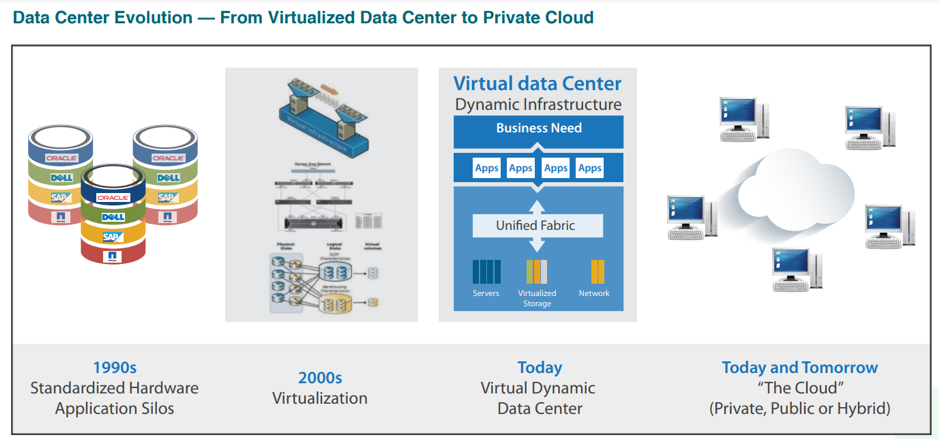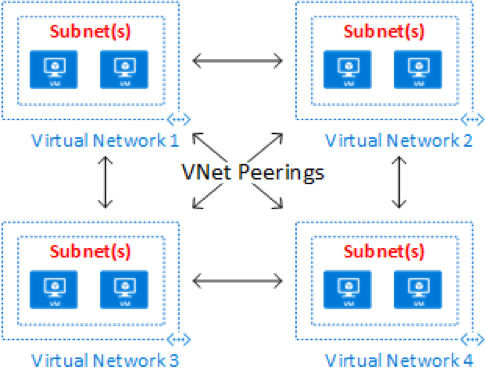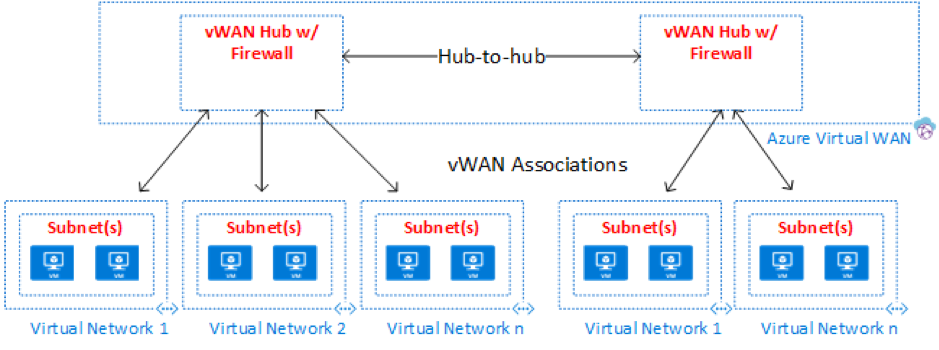Virtual Data Centers, or VDC, support businesses with computing capabilities with a set of cloud resources; hence, they are also sometimes referred to as software-defined data centers.

Data is the fuel for businesses today. It is predicted that there will be 200+ Zettabytes of data in cloud storage by 2025. Data centers are the vaults that store the humongous amount of data generated by enterprises and have become the backbone of digitally-led enterprises. Data centers are one of the most important IT infrastructure components. They support the applications and activities critical for business continuity like email and file sharing, CRM, ERP and databases, working of virtual desktops, communications, collaboration tools, etc. Fundamentally, data centers offer– network infrastructure, storage & security infrastructure, and computing resources.
The traditional data centers were on-premise physical facilities, but as the amount of data generated expanded, enterprises stored data across multiple data centers and on the cloud. Modern data centers evolved, and the infrastructure shifted from physical servers to virtual networks, supporting communication across multiple physical and multi-cloud environments.

Source
Virtual Data Center: Software-Based Data Centers
Gartner projects that in 2022, the global spending on cloud services will reach over $482 billion. The rise in virtual machines combined with the accelerated pace of digital transformation and remote work in a post-pandemic era has propelled the need for better, agile, and flexible data centers. The concept of virtualization is not new in the data center ecosystem. It enables businesses with judicial use of IT resources and provides flexibility to scale up or down depending on the business need. Virtual data centers replicate the functions of a physical data center using software programs, additionally elevating it to new levels of flexibility and functionality.
With data platforms like AWS and Microsoft Azure – the data storage has shifted to the cloud. Virtual Data Centers, or VDC, support businesses with computing capabilities with a set of cloud resources; hence, they are also sometimes referred to as software-defined data centers. As mentioned before, it offers the same services as the physical or on-premise data center; however, it eliminates the need for a physical data center set-up. The VDC helps businesses set up – data servers, storage clusters, bandwidth and other networking components, processing power, etc.
A virtual data center supports businesses with computing abilities that enable day-to-day and advanced business activities like file sharing, emails, CRM & ERP solutions, employee communications & collaboration apps, Big Data storage, AIOps and machine learning, database operations, etc.
The most significant advantage of a virtual data center is its flexibility in adding or reducing capacity without removing the hardware components. The components run on the provider’s virtual machine in virtual data centers, and the user can pay in a pay-per-use model.
Different Topologies of a Virtual Data Center
Depending on the requirement and scale of business, there are multiple topologies on which the virtual data centers can be built like:
Flat Topology - a single virtual network is used to deploy all resources. The flow of control and segregation is done via compute subnets.

Source
Mesh Topology - multiple virtual networks are directly connected to each other using a virtual network peering or Vnets.

Source
A Peering hub and spoke topology - a combination of flat and mesh topology where networks are connected by subnets and Vnets. This topology is best suited for distributed applications and multiple teams with delegated responsibilities.

Source
Virtual WAN topology by Azure - it brings multiple networking, security, and routing functionalities together and is meant for supporting large-scale requirements with branch office scenarios and global WAN services.

Source
Benefits of a Virtual Data Center
Implementing a virtual data center helps enterprises take a holistic approach towards their IT infrastructure that comprises – server, storage, and network, given the following benefits to the enterprises:
- Productivity and cost-efficiency
A virtual data center combined with cloud storage eliminates the need for hardware components. This can mean considerable cost savings for enterprises, especially for large data-led organizations. The elimination of hardware also reduces downtime instances and easier maintenance, leading to an efficient IT infrastructure.
Virtual data centers allow for automatic back-ups at regular intervals. Even if there is any damage to any hardware, there is no data loss. This allows for business continuity and saves cost, time, and resources otherwise needed for data back-ups.
In traditional physical data center models, when the server is turned off, the data transfer time depends on the backup server availability, server image, and the data present in the current data server. With a virtual data center, the job switching takes just a few steps and minutes to activate the virtual machine snapshots. The sop-gap is so minimal that it is not even noticed.
The biggest benefit of virtualization is the scalability that it offers. Enterprises can easily scale up or scale down their data centers requirements without the need for buying additional components or leaving them idle in case of reduced usage.
Virtualization helps enterprises create a test environment, reducing the risk of losing data in case of any mishaps. Users can easily revert to the previous snapshot – basically, it provides the power of doing Ctrl+Z in case of any errors. Users can also separate the online test environment with a virtual data center and use it only when ready.
Virtualization gives enterprises the freedom to not get bound by single vendor independence. Software programs are independent of the hardware they run on, allowing users to function independently of one vendor, server type, or platform.
Disaster recovery is much easier in virtual data centers with the latest snapshots and the flexibility to move the virtual machines elsewhere. This allows enterprises to implement their disaster recovery plan with much more ease than in an on-premise data center.
Virtualization helps enterprises separate various servers – email, web, database, etc. This restricts the failure points to single servers, making the data center much more reliable.
Virtual data centers run on virtual machines and are largely dependent on the cloud environment. This allows enterprises to use virtual machines and technology to create a cloud-based infrastructure, making the migration process to the cloud much simpler.
Wrapping Up
CIOs and IT leaders continuously grapple with the challenge of putting together a future-ready IT infrastructure in place and being cost-efficient at the same time. Prudent IT leaders are adopting virtualization to resolve both challenges. Deploying a virtual data center is a long-term commitment that needs expertise and a strategic approach. A data center solution provider can help enterprises to navigate this journey successfully. We at Nxtra by Airtel can partner with your enterprise to design, build and deploy data center solutions that are tailor-made for your business and equipped to meet the demands of the ever-changing business landscape. To know more about our data center solutions, contact us.











_1724410758.jpg)
